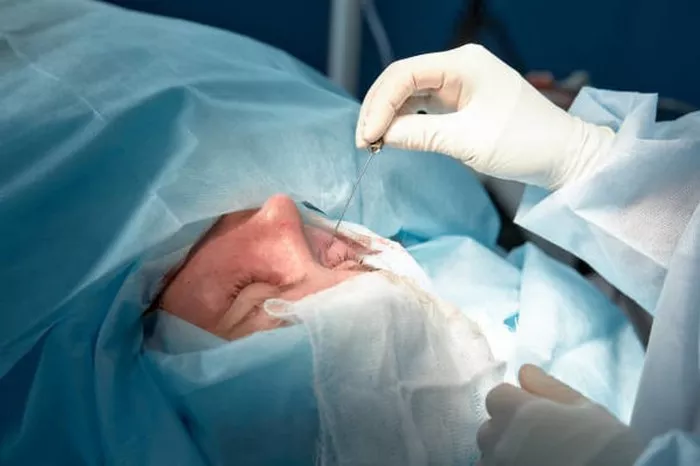Nose surgery, also known as rhinoplasty, is a surgical procedure aimed at reshaping or reconstructing the nose. It is a versatile procedure that can address a variety of concerns, including aesthetic improvements and functional corrections. In this comprehensive guide, we will delve into how nose surgery works, including the preparation, procedure, recovery, and potential outcomes.
Preparation for Nose Surgery
Before undergoing nose surgery, it is crucial to consult with a qualified plastic surgeon who specializes in rhinoplasty. During the consultation, the surgeon will evaluate your nasal structure, discuss your goals and expectations, and determine the most appropriate surgical approach for your unique situation. They may also take photographs and use computer imaging software to provide a preview of the potential outcomes.
In the preparation phase, your surgeon will provide you with specific instructions to follow. These may include:
- Medical Evaluation: You may be required to undergo a comprehensive medical evaluation to ensure that you are in good overall health and that there are no underlying conditions that may interfere with the surgery or the recovery process.
- Medication Adjustments: You will be advised to avoid certain medications and supplements that can increase the risk of bleeding, such as aspirin, non-steroidal anti-inflammatory drugs (NSAIDs), and herbal supplements.
- Smoking Cessation: If you smoke, your surgeon will strongly recommend quitting smoking for a specified period before and after the surgery. Smoking can impair healing and increase the risk of complications.
- Anesthesia Choice: Your surgeon will discuss the anesthesia options for the procedure. Nose surgery is typically performed under general anesthesia, ensuring that you are completely unconscious and pain-free during the procedure.
The Nose Surgery Procedure
The nose surgery procedure can vary depending on the specific goals and concerns of the patient. There are two main techniques commonly used:
-
Open Rhinoplasty
In an open rhinoplasty, the surgeon makes a small incision across the columella, the strip of skin separating the nostrils. This allows for better access and visibility during the surgery, particularly for more complex or extensive nasal corrections. The surgeon then reshapes the nasal structures, including the cartilage and bone, to achieve the desired aesthetic and functional improvements.
-
Closed Rhinoplasty
In a closed rhinoplasty, all incisions are made inside the nostrils, resulting in no visible external scars. This technique is typically used for less complex nasal corrections or when minimal changes are required. The surgeon accesses the nasal structures through these internal incisions and makes the necessary alterations.
During the surgery, the surgeon may perform various techniques, such as reducing or augmenting nasal bone or cartilage, refining the nasal tip, correcting asymmetry, or improving the nasal airway. The specific techniques used will depend on the individual’s goals and the surgeon’s expertise.
Recovery and Post-Operative Care
After nose surgery, you will be closely monitored in a recovery area until the anesthesia wears off. Your surgeon will provide detailed post-operative instructions to ensure a smooth recovery process. These may include:
- Nasal Splints and Dressings: To support the newly shaped nose and promote proper healing, nasal splints or internal dressings may be placed immediately after the surgery. These will be removed by your surgeon during a follow-up appointment.
- Pain Management: You may experience some discomfort and pain in the days following the surgery. Your surgeon will prescribe pain medication to alleviate any discomfort and promote a more comfortable recovery.
- Swelling and Bruising: Swelling and bruising around the nose and eyes are common after nose surgery. Applying cold compresses and keeping your head elevated can help minimize these side effects.
- Physical Activity Restrictions: Your surgeon will provide guidelines regarding physical activities and exercise. It is important to avoid any strenuous activities or activities that could risk injuring the nose during the initial recovery period.
- Follow-Up Appointments: Regular follow-up appointments will be scheduled to monitor your progress, remove any sutures or dressings, and ensure proper healing.
Potential Outcomes of Nose Surgery
The results of nose surgery become more apparent as the swelling subsides and the tissues heal. While each individual’s outcome will vary, nose surgery aims to achieve the following:
- Improved Aesthetics: Nose surgery can address concerns such as a nasal hump, wide or drooping nasal tip, asymmetry, or overall disproportion of the nose. By reshaping and refining the nasal structures, the procedure aims to enhance the overall appearance and balance of the face.
- Functional Improvements: In addition to aesthetic enhancements, nose surgery can also address functional issues. This includes correcting a deviated septum, which may impede nasal breathing, or improving the nasal airway to alleviate breathing difficulties.
- Enhanced Self-Confidence: Nose surgery can have a significant impact on an individual’s self-confidence and overall satisfaction with their appearance. By addressing nasal concerns, the procedure can provide a positive psychological effect and improve one’s self-image.
Conclusion
Nose surgery, or rhinoplasty, is a surgical procedure that can improve the appearance and functionality of the nose. Through various techniques and approaches, a skilled plastic surgeon can reshape and refine the nasal structures to achieve the desired outcome. By understanding the preparation, procedure, recovery, and potential outcomes of nose surgery, individuals can make informed decisions and set realistic expectations for their rhinoplasty journey. Consulting with a qualified and experienced plastic surgeon is crucial to discuss individual goals, evaluate candidacy, and develop a personalized treatment plan for optimal results.


